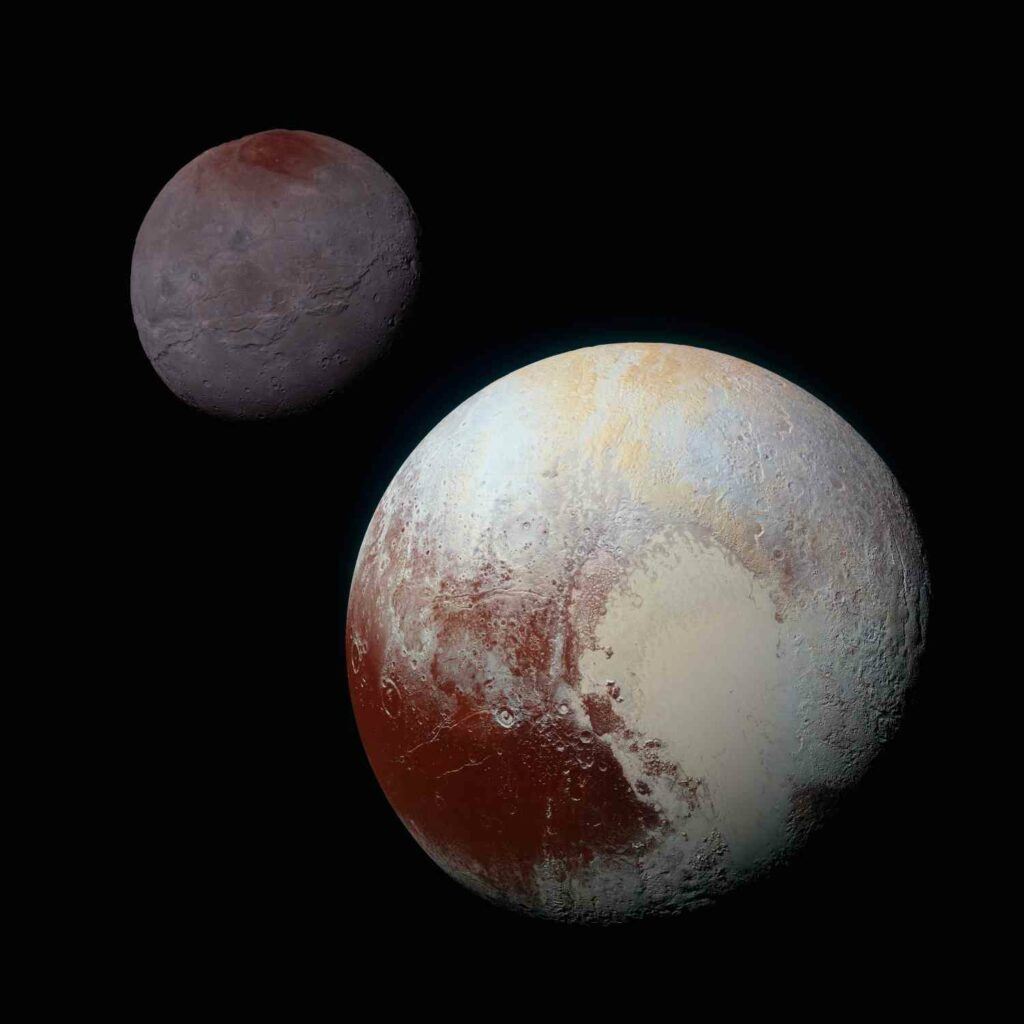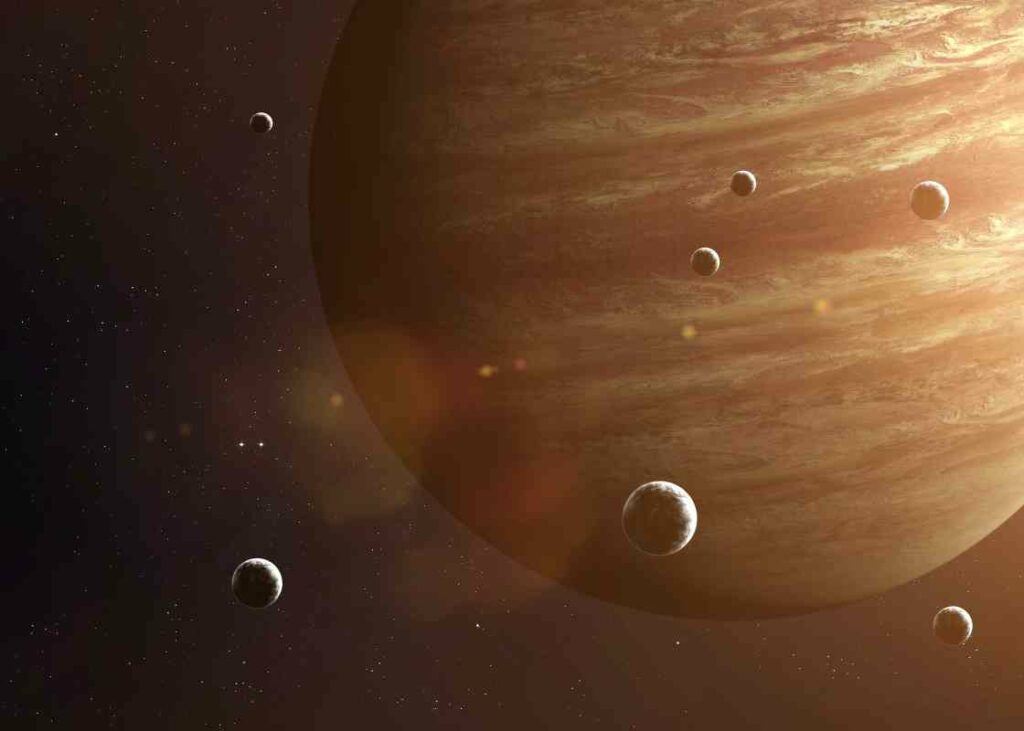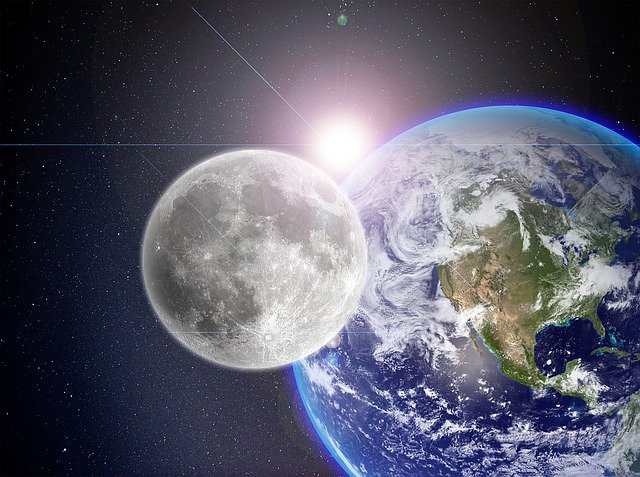*This post may contain affiliate links. This means we may make a commission if you purchase an item using one of our links*
You’ve found yourself here because you really want to know if moons are always smaller than planets right?
Well the very quick answer to this is a definitive no, moons are not always smaller however, whenever a moon orbits a planet or other objects like asteroids, they are almost always smaller than the primary planet or object they’re orbiting.
How Many Moons Are Bigger Than Planets?
Table of Contents
Out of the 8 main planets, only 2 satellites are bigger than the smallest planet in our solar system, which if you didn’t know is Mercury with a diameter of 4879.4km
These 2 are Saturn’s largest moon Titan with a diameter of 5149.5km and Jupiter’s largest moon Ganymede with a diameter of 5268.2km.
Calisto, another one of Jupiter’s moons, is ever so slightly smaller than Mercury with a diameter of 4820.6km. So, other than Mercury, as far as we know there are no other planets that Titan and Ganymede are bigger than.
Now, when we also take into account dwarf planets, with the largest being pluto with a diameter of 2376.6km, including the 3 mentioned above Earth’s Moon (3474.2km), Jupiter’s moon Io (3643.2km), Triton from Neptune (2706.8km), and Jupiter’s moon Europa (3121.6km) are all bigger than it and any other dwarf planet we know of.
Can Moons Orbit Planets Closer In Size To Them?
Yes they can. One such example would be with Pluto as its moon is literally half it’s size. The moon in question is called Charon and it has a diameter of 1212km.

In this situation the scientific observation would be that both objects are orbiting a common singular mass at the center of both as opposed to Charon actually orbiting Pluto.
Now, because the masses of each entity are very similar to each other, Charon does not look like its orbiting Pluto unlike how the moon orbits Earth or Ganymede or Titan orbit their respective planets.
It’s only because of the gravitational strength of the bigger objects that It seems like each moon is orbiting their respective planets when in reality both entities are orbiting around a singular point.
One real world example would be like that of a see saw. If there is large mass on one side and a smaller mass on the other, in order for the see-saw to achieve equilibrium the larger mass would need to get closer to the mid point of both objects in order to somewhat balance itself out.
The same would apply with a baton. Let’s say that this baton was equally balanced in size, in order to reach a point of balance you would need to get closer to the center of mass of this baton. Say that one side of the baton was heavier, in order to achieve equilibrium the larger mass would need to get closer to the center of mass.
More often than not moons are smaller masses which is why they tend to look as if they’re orbiting a planet as opposed to a singular mass point like binary stars.
Can Moons Have Their Own Submoons?
As a question, this does make some sense after all if planets can orbit stars, moons can orbit planets or asteroids, surely then it would make sense that a moon can also have its own moon/s right?
After all there are quite a fair few very large moons that we know of as mentioned above…
However, at this current moment in time astronomers have yet to discover a moon that has its own submoon orbiting it.
The Reasons Why Moons Don’t Have Their Own Submoons
With that being said there are a few reasons why moons don’t have submoons whilst smaller objects like asteroids can have moons.
First lets take Mercury as an example. Mercury and venus both don’t have moons due to one major reason, the Sun’s gravitational pull.
As a result it would be very tough for any moon to fall into orbit with Venus and almost impossible for a moon to orbit Mercury as they would essentially be pulled into the Sun’s tidal gravitational forces which could also potentially result in any moon around Mercury crashing into the planet.
The same theory would also imply to the bigger moons orbiting all of the other bigger planets like Jupiter and Saturn and even Earth. The basic premise is to do with Earth’s/Jupiter’s/Saturn’s etc. gravitational tidal forces being superior to that of the moons on each celestial body therefore, these submoons would need to orbit far closer to the moon.
As the submoon’s orbit would be far faster around the moons, it would cause the submoons and moon not coordinating effectively.
Ultimately the tidal forces between the submoons and the moon would result in the submoon being pulled towards each other resulting in the entity crashing.
This is actually a phenomenon that was displayed by a small satellite called PFS-2, which was sent out in 1972 by 16 Apollo astronauts. It displayed some very hectic wild swings whilst orbiting our moon before eventually crashing onto the lunar surface.
Why Do Bigger Planets Have More Moons?

The main reason why bigger planets tend to have far more moons is due to firstly their size and as a result the bigger gravitational field they have.
Furthermore, because the larger planets on the outer regions don’t have as strong a force from the sun’s gravitational field, they build kind of like their own miniature solar system like formations with a plethora of moons orbting them in close range and a bit further away too.
As a whole the basic answer is to do with the mass of the gas giants being far larger than that of the terristrial planets and the effects of the Sun’s gravitational. For a more in depth look at this question check out this article.
Conclusion
In all the instances I’ve mentioned above, a moon technically is always smaller than the planet it orbits, which of course would mean that yes moons are always smaller than planets they orbit but, not all of them are genuinely smaller than the 8 main planets in our solar system aka Mercury.
If this article has been quite informative and you feel it would maybe enlighten others in the same way that it has you, we would very much appreciate it if you shared it around!
Thanks for reading.

